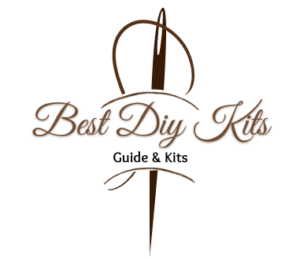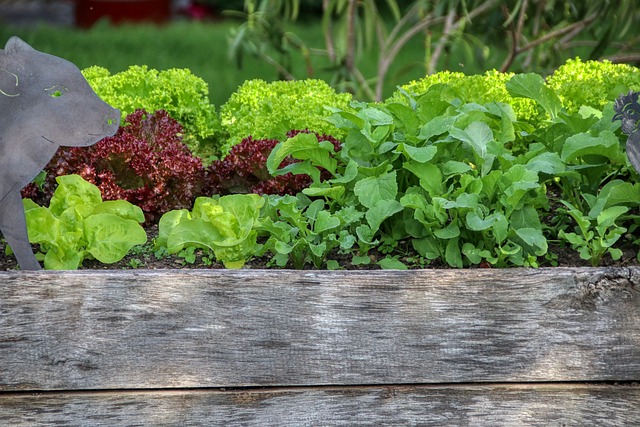Introduction:
DIY elevated garden bed is a perfect solution for anyone looking to garden in small spaces, avoid bending over to tend to plants, or improve drainage and soil control.
Building your own DIY elevated garden bed not only makes gardening more accessible but also allows you to customize the size, materials, and design to fit your space and needs.
Whether you’re an experienced gardener or just getting started, elevated garden beds can significantly improve your gardening experience.
In this guide, we’ll explore 10 DIY elevated garden bed ideas that are easy to build, budget-friendly, and tailored to different styles and gardening preferences.
From simple wooden boxes to more creative designs using upcycled materials, these elevated beds will help you grow healthy plants efficiently.
1. Simple Wooden Elevated Garden Bed
For a straightforward and functional design, a simple wooden elevated garden bed is an excellent project for beginners. It provides ample space for growing vegetables, herbs, or flowers while keeping your garden neat and organized.
Materials Needed:
- Pressure-treated lumber (2×6 boards for the sides, 4×4 posts for legs)
- Galvanized screws
- Landscape fabric
- Soil
Step-by-Step Guide:
- Cut the Wood: Measure and cut the wood according to the desired size of your garden bed (e.g., 4ft x 2ft).
- Assemble the Frame: Screw the 2×6 boards together to create a rectangular frame.
- Add the Legs: Attach 4×4 posts to each corner for elevation. Make the legs 2-3 feet tall to ensure the bed is comfortably elevated.
- Line with Landscape Fabric: Lay landscape fabric at the bottom to improve drainage and prevent weeds.
- Fill with Soil: Add nutrient-rich soil, and your garden bed is ready for planting.
Expert Tip: Garden expert Joe Lamp’l suggests using pressure-treated wood because it resists rot and pests, ensuring your garden bed lasts longer. He advises, “Seal the wood with a non-toxic sealant to protect your plants from chemicals” (source).
2. Raised Bed with Trellis for Climbing Plants
A raised bed with an integrated trellis is ideal for growing climbing plants like tomatoes, cucumbers, or peas. It maximizes vertical space and makes it easy to care for plants that need support.
Materials Needed:
- Wooden boards (2×6)
- Wooden posts or bamboo stakes (for the trellis)
- Chicken wire or garden netting
- Screws or nails
Step-by-Step Guide:
- Build the Base: Construct a standard raised bed using wooden boards.
- Install the Trellis: Attach wooden posts to the back of the bed, securing them with screws. Stretch chicken wire or garden netting between the posts to create a trellis.
- Plant Climbing Vegetables: Plant your climbing vegetables near the trellis so they can naturally attach and grow upward.
Expert Tip: Gardening expert Bonnie Plants recommends adding mulch around the base of your climbing plants to help retain moisture and prevent weeds from competing with your crops (source).
3. Tiered Elevated Garden Bed for Multiple Levels
If you’re short on space but want to grow a variety of plants, a tiered elevated garden bed provides multiple growing levels in one structure. This design is great for creating a dynamic look in your garden and optimizing plant growth in a compact area.
Materials Needed:
- Pressure-treated lumber
- Galvanized screws
- Soil
Step-by-Step Guide:
- Build the Base Level: Start by constructing the bottom tier as a simple rectangular raised bed.
- Add the Second Tier: Build another, smaller raised bed and attach it on top of the first tier.
- Repeat for More Tiers: Continue adding smaller tiers to achieve the desired number of levels.
- Fill with Soil: Fill each tier with soil and plant different crops based on their sunlight needs (e.g., sun-loving plants on top, shade-tolerant plants on the bottom).
Expert Tip: Landscape designer Sara Bendrick advises using the upper tiers for plants that require more sunlight and the lower tiers for shade-tolerant varieties. This way, you can make the most of limited space while catering to different plant needs (source).
4. Elevated Herb Garden Bed
For those who love cooking with fresh herbs, an elevated herb garden bed offers easy access to your favorite kitchen plants. This compact design is perfect for patios, balconies, or small backyards.
Materials Needed:
- Wooden boards or old crates
- Galvanized screws
- Landscape fabric
- Potting soil
Step-by-Step Guide:
- Build or Reuse a Frame: Construct a small raised bed using wooden boards or upcycle old wooden crates.
- Line with Fabric: Line the bottom with landscape fabric to prevent soil from washing away.
- Fill with Soil: Add well-draining potting soil designed for herbs.
- Plant Your Herbs: Plant a variety of herbs like basil, thyme, and rosemary in separate sections of the bed.
Expert Tip: Herb gardening expert Jekka McVicar recommends spacing your herbs appropriately to prevent overcrowding and ensure they have enough room to thrive (source).
5. Upcycled Pallet Elevated Garden Bed
For a budget-friendly project, an upcycled pallet elevated garden bed is an eco-friendly way to repurpose materials you might already have. Pallets are easy to find and make great garden beds with a rustic look.
Materials Needed:
- Wooden pallets
- Landscape fabric
- Screws or nails
- Soil
Step-by-Step Guide:
- Find a Sturdy Pallet: Look for clean, solid pallets that are free of chemicals or treated wood.
- Add Legs for Elevation: Attach 4×4 wood posts to each corner of the pallet to elevate it off the ground.
- Line with Fabric: Line the inside of the pallet with landscape fabric to hold the soil.
- Fill and Plant: Add soil and plant flowers, herbs, or small vegetables in the gaps between the pallet slats.
Expert Tip: Eco-friendly gardening advocate Mike McGrath advises sealing your pallet wood with natural, non-toxic wood sealer to prevent the wood from rotting while protecting your plants (source).
6. Self-Watering Elevated Garden Bed
A self-watering elevated garden bed is ideal for gardeners who travel frequently or have busy schedules. This design includes a built-in water reservoir that automatically hydrates your plants, ensuring they stay healthy and hydrated with minimal effort.
Materials Needed:
- Large plastic container (for water reservoir)
- Wooden boards for framing
- PVC pipes
- Potting soil
Step-by-Step Guide:
- Build the Frame: Construct a wooden raised bed frame using standard lumber.
- Install the Water Reservoir: Place a large plastic container at the bottom of the bed to act as a reservoir.
- Add PVC Pipes: Use PVC pipes to create wicking chambers that allow water to move from the reservoir into the soil.
- Fill with Soil: Add potting soil on top of the reservoir and plant your vegetables or flowers.
Expert Tip: Master Gardener Linda Vater recommends checking the water reservoir once a week to ensure it stays full, especially during hot weather.
7. Metal Elevated Garden Bed
For a modern, industrial look, consider a metal elevated garden bed. This sleek design is perfect for those looking for a low-maintenance, long-lasting option that can withstand harsh weather conditions.
Materials Needed:
- Galvanized metal sheets
- Wooden boards (for framing)
- Screws and a drill
- Soil
Step-by-Step Guide:
- Create a Wooden Frame: Build a rectangular frame using wooden boards for the base.
- Attach Metal Sides: Cut galvanized metal sheets to size and attach them to the wooden frame using screws.
- Line and Fill: Line the bottom with landscape fabric, then fill the bed with soil and start planting.
Expert Tip: Home Improvement Blogger Melissa Riker points out that metal garden beds retain heat, making them ideal for growing warm-weather crops like tomatoes and peppers (source).
8. Keyhole Garden Bed for Sustainability
A keyhole garden bed combines elevated gardening with composting. This sustainable design includes a central composting area that provides nutrients to the surrounding plants, making it perfect for eco-conscious gardeners.
Materials Needed:
- Bricks or wooden boards (for the outer wall)
- Compost bin (or wire mesh)
- Soil
- Organic matter (for composting)
Step-by-Step Guide:
- Build the Outer Wall: Use bricks or wood to create a circular or square raised bed with a keyhole-shaped entry on one side.
- Add the Compost Area: In the center, place a compost bin or build a wire mesh container for composting organic material.
- Plant Around the Compost: Fill the bed with soil and plant your crops around the compost area, which will nourish the soil as the compost breaks down.
Expert Tip: According to Sustainability Expert Dr. Elaine Ingham, “Keyhole gardens are ideal for recycling kitchen scraps and reducing the need for external fertilizers” (source).
9. Elevated Garden Bed with Built-In Benches
Combine functionality with comfort by building an elevated garden bed with built-in benches. This design gives you a place to sit while gardening or relaxing outdoors, making it perfect for patios or small spaces.
Materials Needed:
- Wooden boards
- Screws and nails
- Outdoor seating cushions (optional)
- Soil
Step-by-Step Guide:
- Build the Garden Bed: Construct a standard elevated garden bed.
- Attach Benches: Add wooden boards along the sides to create seating areas.
- Customize: Paint or stain the wood and add cushions to the benches for extra comfort.
Expert Tip: Outdoor Living Expert Jamie Durie recommends placing this design near a patio or deck to create a relaxing outdoor area for both gardening and lounging (source).
10. Cedar Elevated Garden Bed for Durability
Cedar is one of the most durable and rot-resistant woods, making it an excellent choice for an elevated garden bed. This design is easy to construct and provides a long-lasting, natural look.
Materials Needed:
- Cedar wood boards
- Screws and a drill
- Soil
Step-by-Step Guide:
- Cut and Assemble the Cedar Boards: Measure and cut the cedar boards to your desired bed size. Assemble the frame using galvanized screws.
- Add Legs: Attach cedar posts to the bottom corners for elevation.
- Fill with Soil: Fill the bed with soil and plant your vegetables, herbs, or flowers.
Expert Tip: Garden expert Angela Thomas advises, “Cedar naturally resists decay and insects, making it a fantastic material for long-lasting garden beds without the need for chemical treatments” (source).
Conclusion
With these 10 DIY elevated garden bed ideas, you can create a functional, attractive, and efficient gardening space that suits your style, budget, and available space.
Whether you prefer a simple wooden bed or a more elaborate self-watering design, these projects will help you grow healthy plants while enhancing your outdoor area.
Frequently Asked Questions.
1. What is the best material for a DIY elevated garden bed?
Cedar and pressure-treated wood are excellent options for durability and rot resistance. You can also use upcycled materials like pallets or metal sheets.
2. How deep should an elevated garden bed be?
Most elevated garden beds should be at least 12 to 18 inches deep, depending on what you’re growing. Deeper beds are ideal for root vegetables like carrots and potatoes.
3. Do I need to line my elevated garden bed?
Yes, it’s recommended to line the bottom of your garden bed with landscape fabric or hardware cloth to prevent weeds and improve drainage.
4. How can I prevent my garden bed from rotting?
Using rot-resistant materials like cedar or applying a non-toxic wood sealant can help prevent rot and prolong the life of your garden bed.
5. Can I build an elevated garden bed without power tools?
Yes! Some simple designs can be assembled using hand tools like a saw, hammer, and screwdriver, though power tools can speed up the process.


